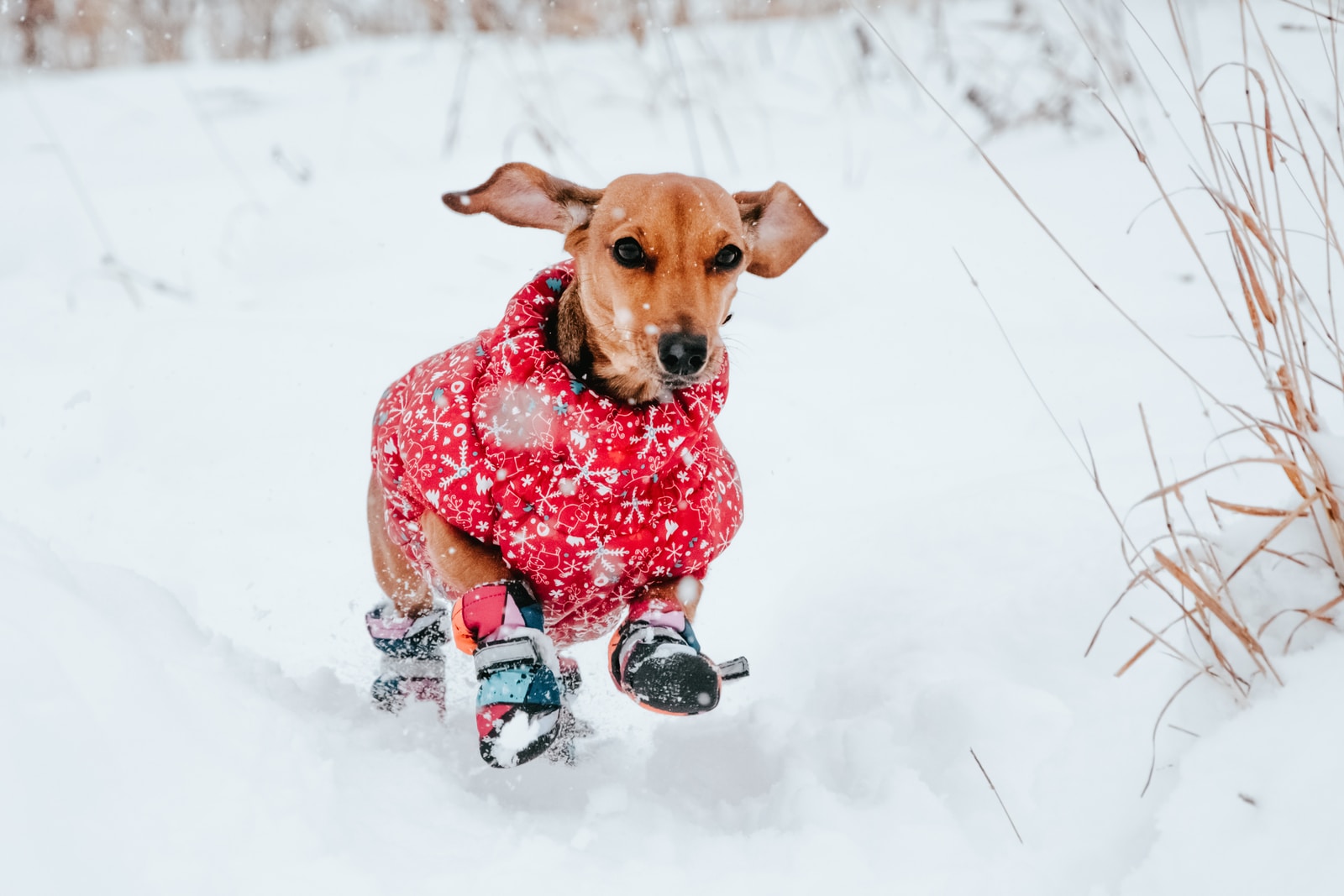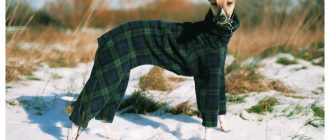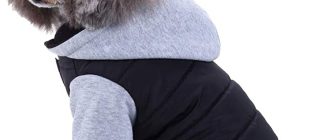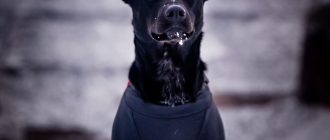Why do dogs need clothing like dog jackets?
There is no evolutionary reason for dogs to need clothes. A dog’s fur keeps it warm enough and protects it from sunburn, and we keep our dogs well-fed, so there is no reason for them to hunt for food. On the other hand, there is no particular reason why they shouldn’t wear clothes: if we dress our dogs up and take them out in public, they generally behave as if they think it is perfectly normal, or at least as far as I can tell from their lack of reaction.
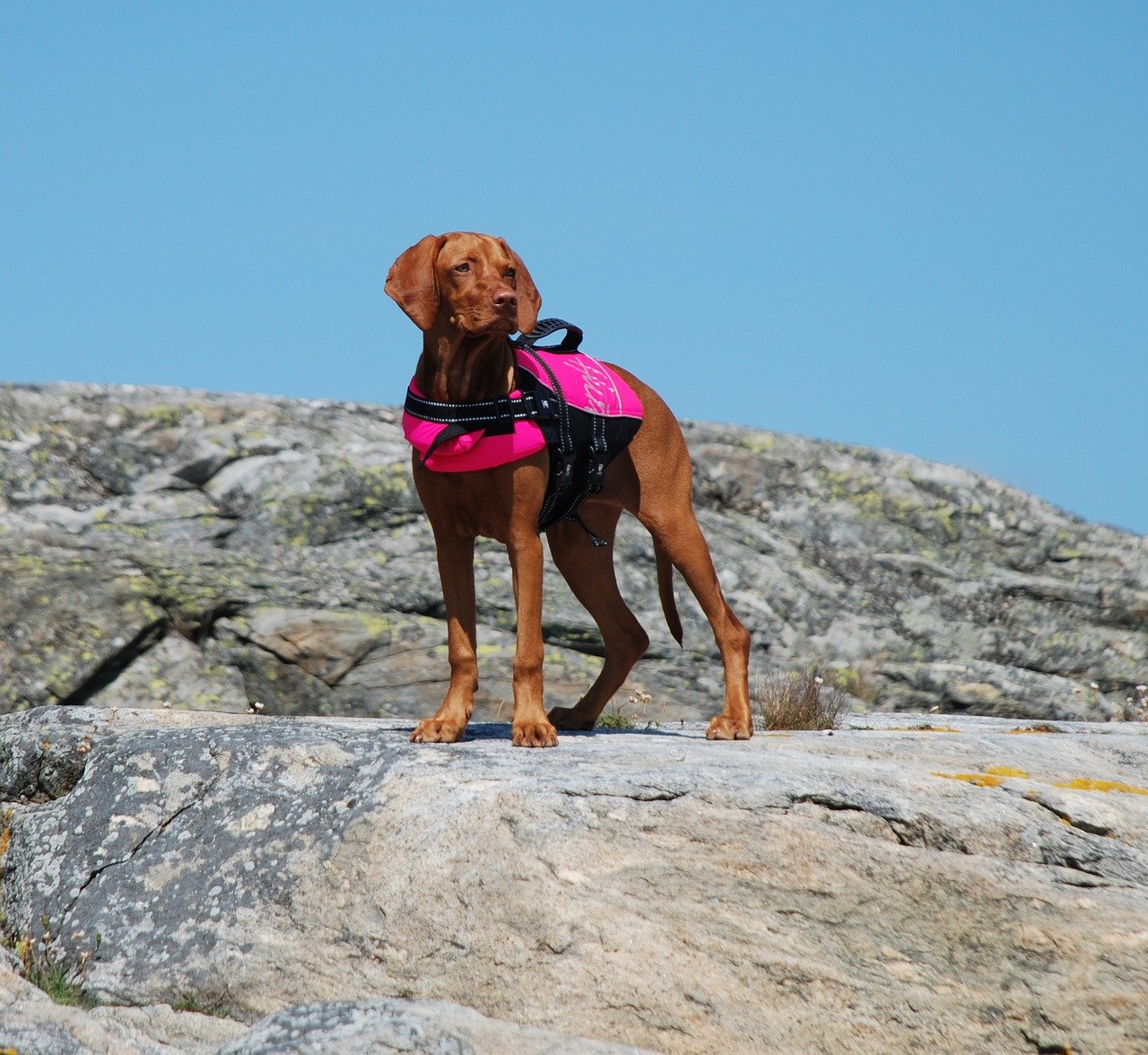
The only way I can understand this behavior is that they are just like us: they see an opportunity to do something that confers status on the person doing it, and they seize upon it as a chance to impress the opposite sex.
There are three kinds of dog jackets:
- Outerwear, which is designed to be worn over other clothes and generally looks like a small parka. These are the most stylish and, in theory, the warmest. However, they can also be bulky and sometimes look ridiculous.
- Underwear, which is designed to be worn next to the skin and generally looks like a Spandex bodysuit (I’m not kidding). These are warm but don’t look very good when worn over outerwear. They also make you worry about whether they’re too tight or your dog will poop when you’re out on a walk together.
- Sweaters, which are designed to fit loosely and look like sweaters (I’m still not kidding). These can be cute but tend to pill after a while and aren’t quite as warm as.
The way dog jackets work is actually better than people expect
Most people have some vague idea that a dog’s fur keeps it warm. But I think most of them think the fur itself is thick and fluffy. In fact, a dog’s coat is very thin and not as fluffy as it looks. I have a mixed-breed terrier who lives outside most of the year, and people are always shocked when they touch her fur.
Most outerwear for dogs works the same way as my dog’s coat: a layer of synthetic material on the outside, with an air gap between that and a layer of down or other insulation on the inside. The outer layer resists rain and snow; it is waterproof but breathable, so moisture from the dog’s body evaporates through it. The insulation traps body heat. But there is no “real” fur involved at all.
If you think about this arrangement, you will see that it is better than you might expect. The water-repellent outer layer is smooth, which means that wind doesn’t get under the jacket and cause turbulence and drag as it does with many human jackets (and unlike many human jackets, my dog’s jacket also has a neck baffle to prevent air from getting up underneath). Because the air gap creates convection currents in the air trapped.

It’s not that hard to predict how well a dog jacket will work in practice. Just think about how it works in principle. Dog skin is not very good at holding in heat, and dog fur is very good at insulating against air and water, but not so good at insulating against cold. So if you want to make a dog jacket, you have two basic options: either cover the dog with fur or cover him with something that lets air and water get close to his body.
Dog coats retain body heat
The dog coats will do a poor job of retaining heat if the dog’s coat is already thick enough to retain the dog’s body heat. The inner layers of a dog’s coat will keep warm as long as the outer layer remains dry. If the outer layer gets wet, the inner layers will take on body heat from the dog, and its temperature will rise. This effect is familiar to anyone who has run a race in a warm-up suit or put on a wet bathing suit.
Just as a warm-up suit loses heat when it gets wet, a dog coat made with an inner layer that doesn’t absorb much water can be much more effective at retaining body heat than one made with an inner layer that absorbs more water.
The way coat thickness affects body temperature is well known. A thick coat keeps the body warm by trapping a layer of still air next to the skin; this isolates the body from the cold environment. A thin coat allows more heat to be lost by convection, but it also means that any warm air in contact with the skin can easily be replaced by colder air.
Dog jackets protect dogs from low temperatures
If it’s cold enough outside, the best thing you can do for your dog is to keep it inside. But there are other things you can do, too. One step is to insulate your dog’s house. Another step is to put a jacket on your dog.
The jacket protects your dog from the cold by reducing the amount of heat escaping from its body. How does that work?
Wearing a jacket reduces the area of skin between the air and the fur. When the wind blows over this reduced surface, the wind speed increases slightly. But when air moves faster, it tends to carry away more heat. So when your dog is wearing its jacket, there’s less heat loss to the air through its fur, because there’s less air moving past it.
When I go outside my house on a winter morning wearing a jacket, I am not ” protecting” my body from the cold. If I were to strip naked before going outside, my body would be just as warm as if I were wearing a jacket. My jacket protects me only from the wind chill—that is, it protects my skin from being chilled by the wind blowing on it, so that it feels colder than it actually is.
Dog jackets can be stylish
Dog jackets can be stylish. I know this flies in the face of everything you’ve ever heard about dog clothing. And no doubt you think you’re too hip and sophisticated to even consider such a thing. But for all the proud owners of a Pomeranian, I am here to tell you that dog jackets can be stylish. And I shall now proceed to tell you how.
But first, we must talk about what we mean by the word “dog.” What is a dog? Is it a kind of animal? Or is it a kind of fashion accessory?
I ask these questions because if we want to dress up our dogs, it helps to know what the dogs are wearing the clothes for. Dogs have been around for at least thirty million years, but their fashion sense wasn’t always as good as it is now. In the old days, they didn’t care much about clothes. They would roll around in mud or snow or whatever, and that was fine with them. But then one day a bunch of important-looking white people came along and said, “I’m sorry, but your coat is unacceptable.” So the dog took off all his clothes and went home crying, and he called up PETA and got them to sue on his behalf.
Takeaway: Overall, dog jackets keep dogs warm.
Overall, dog jackets keep dogs warm. This is the central fact about dog jackets. Some of them keep dogs warmer than others. The following is not an overall fact about dog jackets, because it doesn’t apply to most dog jackets: Dog jackets are often brightly colored, and most brightly colored objects make dogs look more handsome or beautiful, or cute.
But there are also costs to dog jackets. These include the time you have to spend finding the right style, sizing, and color of jacket for your dog, as well as the constant updates you must provide on the latest canine fashion trends.
Dog jackets are worth it, though. As long as you keep up with what’s new in dog jackets, they can keep your dog happy and healthy all winter long. If you wait too long between purchases, though, the cold weather will pass your dog by before you’ve found a solution.
